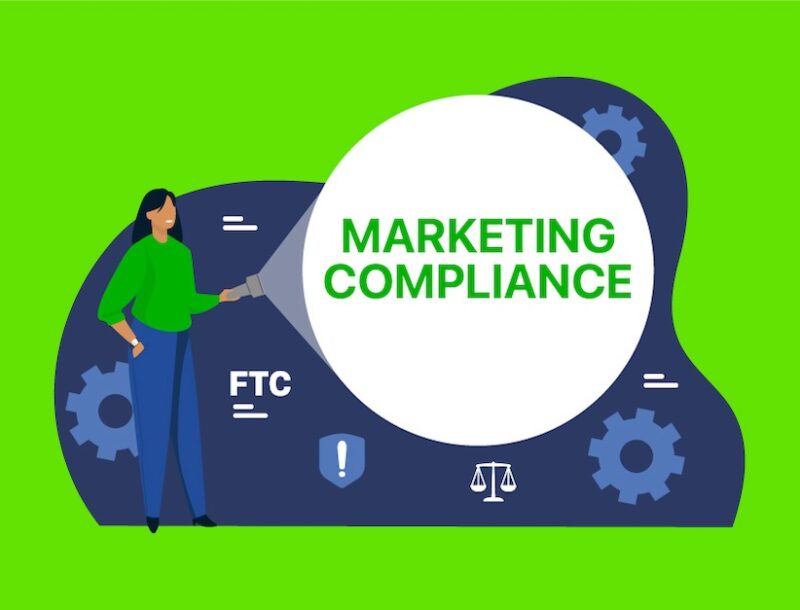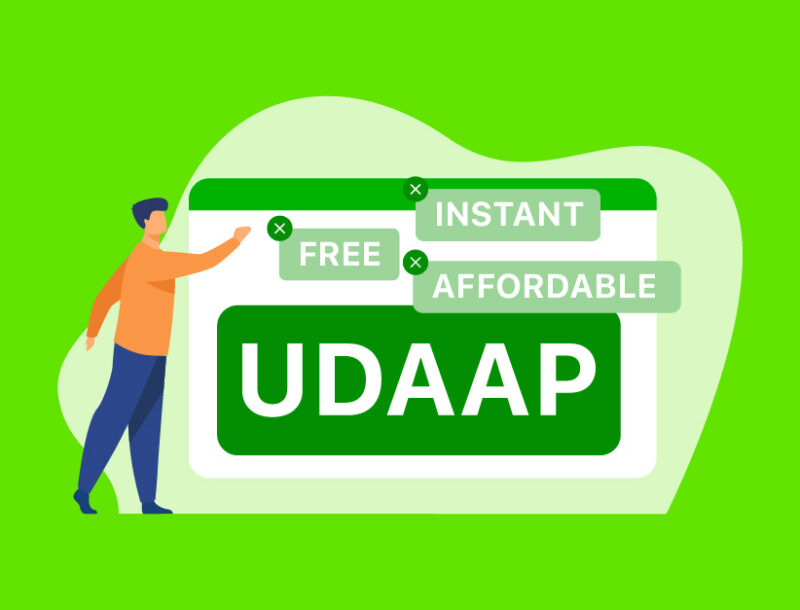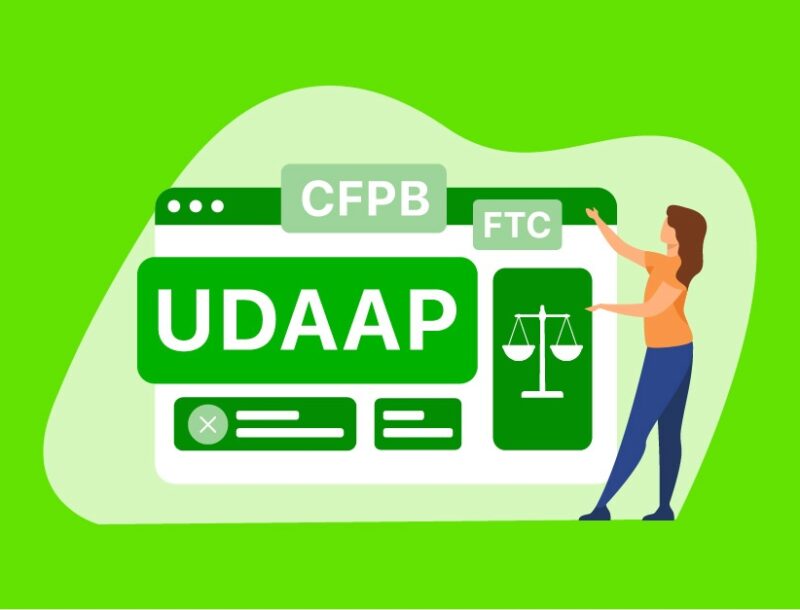Episode 46: Mortgage Compliance Roundtable Rundown and Takeaways Q2 2024

In this episode of the COMPLY Podcast, I sit down with my co-host Rhonda McGill to discuss the latest trends and challenges shaping the mortgage compliance landscape, drawing from our most recent mortgage industry roundtable with compliance leaders.
We’ll cover:
- State licensing disclosures in marketing and advertising materials
- Compliance considerations for QR codes that point consumers to loan information or to directly apply
- The frequency and intensity of regulatory examinations
- How companies adapting their business practices to stay compliant and competitive
- How the Supreme Court’s ruling on the CFPB’s constitutionality could affect compliance practices within the mortgage industry
Show Notes:
- Join the next mortgage industry roundtable: https://comply.performline.com/roundtable/mortgage
- [Webinar] UDAAP + Deceptive Advertising: The Cost of Misleading Marketing Materials: https://comply.performline.com/webinar/udaap-deceptive-advertising
- Access more PerformLine content and resources: https://performline.com/resources/
- Consumer Mortgage Protection Act FAQ: https://www.michigan.gov/difs/news-and-outreach/faq/consumer-finance/consumer-mort-protection-act
- Michigan Consumer Mortgage Protection Act (Excerpt): https://www.legislature.mi.gov/Laws/MCL?objectName=mcl-445-1636
- Regulation X Part 1024 on special information booklet at time of loan application: https://www.consumerfinance.gov/rules-policy/regulations/1024/6/
- Connect with Rhonda McGill: https://www.linkedin.com/in/rhonda-mcgill/
- Connect with Gianna Kennedy: https://www.linkedin.com/in/gianna-kennedy/
Subscribe to COMPLY: The Marketing Compliance Podcast
About COMPLY: The Marketing Compliance Podcast
The state of marketing compliance and regulation is evolving faster than ever, especially for those in the consumer finance space. On the COMPLY Podcast, we sit down with the biggest names in marketing, compliance, regulations, and innovation as they share their playbooks to help you take your compliance practice to the next level.
Episode Transcript:
Gianna:
Hey there COMPLY podcast listeners, this is Gianna, your co-host, and welcome to this week’s episode. This week I sat down with Rhonda McGill, PerformLine’s Senior Director of Customer Marketing and my podcast co-host, to discuss some key takeaways from our most recent mortgage compliance roundtable. We discuss key themes and some helpful insights for folks in this industry to start thinking about and implementing today. As always, thanks for listening and enjoy!
Gianna:
Welcome, Rhonda.
Rhonda:
Thank you so much, Gianna, such a pleasure to be here with you on the other side of the podcast.
Gianna:
So, Rhonda, today we’re going to talk about a few of the key themes and takeaways from our most recent quarterly mortgage roundtable with compliance leaders in the space that happened last week.
Rhonda:
Yes.
Gianna:
So, for those who aren’t aware, Rhonda hosts these virtual roundtables quarterly as an opportunity for those in the mortgage compliance space to come together, discuss what’s happening in the industry, and share best practices, and sometimes just to share common grievances. And I will note that even though Rhonda and I are going to discuss common themes from this event last week, engagement in these sessions is completely confidential, so we won’t be sharing any names, titles, or companies of those who partook in the event, but rather just some key takeaways and hopefully some good next steps for those in this space.
Let’s jump right in and start with state licensing disclosures in advertising materials. What are some of the biggest challenges companies face with regulatory compliance in advertising, especially when dealing with varying state requirements?
Rhonda:
So, yeah, you know, every time we get together, there’s like a different trend or something new that’s happening. But this conversation, we kicked off with the group sharing some frustrations about licensing disclosure requirements. When they’re putting their marketing together, a lot of times, there’s always the fine print, the stuff that we all are familiar with but most of us never read. It’s required by certain states. This has been a challenge for many in the mortgage industry because it’s not always clear which states require what, and exactly what they want to see. Arizona and California, for example, were brought up because there were a couple of examples of confusion about what exactly should be put in the disclosure and which licenses to disclose, and how to disclose them. So those were part of the conversation that was going back and forth. It was a really good discussion. I think everyone who was on there, some folks thought they knew some things, they walked away with some new information and vice versa.
We also hear a lot about states like Washington. Washington has always had a really hardcore enforcement setup, and same with New York because these states are very particular with their requirements for marketing. So nothing was new in terms of what states are doing, but folks are still trying to wrap their heads around what exactly it is that the states want, what are some of the things that other folks are doing, best practice sharing around how can we shorten things, can we abbreviate, how can we make the most of the real estate of the page of marketing that we’re working with. It was a good discussion, and I think everybody walked away with some good takeaways.
Gianna:
Yeah, absolutely. Cool. So, another interesting topic that came up was around QR codes to point consumers to loan information or to directly apply for a loan. What are some compliance considerations that mortgage companies need to keep in mind if they’re going to start using these QR codes?
Rhonda:
QR codes, their convenience definitely helps get to something much quicker. A lot of folks have mentioned that they’re now starting to utilize those on business cards for the convenience of driving a consumer directly to their website to apply for a loan. Companies need to make sure, however, that they are working with secure QR codes, that they also understand where these QR codes lead, and that they’re doing some of the compliance checks required. Some states now, as they’re starting to ask for exam documents, would like to pre-review QR codes. So, QR codes are a great thing in many ways; they are an easy shortcut, but they also come with the great responsibility of making sure you have your hands wrapped around all of those QR codes and that they are accessible in the event of an examination.
But one of the things I did want to jump back to as we were just talking about the state group-related things, there were a couple of instances that came up where some of the attendees were talking about just some of the weird dynamic things that they’ve been seeing from some of the states. For example, one of the attendees mentioned getting cited by a state because they didn’t have all of their disclosures on sticky notes that they were using for promotional purposes. Sometimes there’s this overkill, this weird grey area from a compliance perspective, like if we’re just making mugs, do we have to put all the stuff on there? Typically, I’ve never seen anyone do it, but there has been a recent trend, and I don’t know if it’s because it’s a newer generation of examiners, but there are some folks that are really getting a little bit nervous about what we need to put on our promotional materials and what we can’t do. So, a lot of discussion around those grey areas, the things around promotions and things that aren’t necessarily advertising per se, but gift-giving with your brand attached. So, we had that conversation too. I just wanted to make sure I threw that back out there because that was a very interesting part of the roundtable discussion.
Gianna:
Yeah, that is super interesting. It seems to me that no matter what you’re doing for marketing or advertising or branding, it’s better to be safe than sorry and just always be prepared with something in case the regulators come asking for it, even if it’s something as silly as post-it notes or a mug, or something that seemingly wouldn’t be even on their radar. Yeah, super interesting.
Rhonda:
We had a couple of people joking about the mug conversation and saying, “We’ll make sure we put all the disclosures at the bottom of the mug, so you’ll only see it when you flip it over.”
Gianna:
That’s funny.
Rhonda:
The group has a lot of fun together. A lot of the folks that are part of the roundtable have been there from the beginning. Someone was like, “Gosh, it’s been over three years now.” Some of us have been together from the very beginning, and they have just continuously come back again and again to the roundtable and have provided a lot of really great information. They’re the ones that are boots on the ground out there doing the work. So I always lean on the folks that come to the roundtable to really have those discussions together because they know what’s happening in their space. Just wanted to throw that out there. I love my folks.
Gianna:
Yeah, exactly. It’s one of those things you probably would never hear about unless you’re talking to these people who, like you said, are boots on the ground. We probably never would have heard of that if we didn’t get to talk to them.
Rhonda:
Exactly, just the random, weird things that pop up, and you’re like, “Huh!”
Gianna:
Yup, they’re a great group. There’s never a lack of conversation or topics. These roundtables are awesome.
Rhonda:
I’ll start the conversation, but boy, they really bring it, and I really appreciate that.
Gianna:
Absolutely. Cool. Let’s jump to the business environment for the mortgage industry. What are some trends that we’re seeing in the frequency and intensity of regulatory exams, and how are these companies adapting?
Rhonda:
Most of the attendees agree that examinations have not slowed, and in some instances, there has been a recent uptick by the state. I’m not sure if this is because of the uncertainty with how things were going to shake out with the CFPB, but we’re going to address that a little bit later. Many of the attendees shared that they were getting slammed with the number of exams and that there has just been a much closer eye around marketing compliance. I’m assuming that has to be because there’s a lot more competition to bring in the leads and generate the business for the organization. So there’s a lot more risk being taken in the marketing space. Those were some of the things that I was hearing, but I would also say that most of us agree that the rates, as far as the overall environment and everything that’s going on, the rates as they currently are, many of us, and I always say seasoned folks, realize we were saying the rates are not bad. It’s the inventory, it’s the house prices that have been driven up, but the interest rates overall are where they were prior to the economic bust in 2008 and the pandemic. Yes, we had some artificially very low rates for a long time. I think people just got spoiled. Rates under 4% were considered the norm for a whole almost generation of folks. A couple of our attendees even said they remember rates being as high as 10 to 12%. So, again, I would say the issue is housing costs. We had that discussion, and as usual, we go into discussions about everything.
But I have to say again, the roundtable discussions are great because they provide a safe space where people can share best practices, not just the compliance doldrums, but also some of the amazing things companies are doing. They’re creating a lot of opportunities. We had a great conversation about down payment assistance programs and how more companies are using those. It took me back to my days before I came into the SaaS world, when I was in the mortgage space. Before that, I was in affordable housing development, working with families to help them close affordability gaps. That was what I did for a living. It took me back to the nonprofit days and all the things I did before moving into the mortgage industry on a larger scale.
It was really great to hear those conversations and to learn about the wonderful, innovative things that many mortgage companies are doing. They’re really taking the wheel, jumping in the driver’s seat, and creating opportunities for consumers. These conversations remind us that, yes, the environment is challenging.But there are some areas within the business where companies are really stepping up and trying to find innovative solutions to close those gaps.
Gianna:
Yeah, absolutely. It’s been interesting for me, and all the time we’ve been working with these mortgage companies and in the mortgage space, just seeing how much it has really changed, especially from the start of COVID. Even before that, like you said, the market was really good back in 2021, but now we’re seeing those challenges. It’s been interesting to see how these companies have also adapted to meet a lot of those challenges.
Rhonda:
They really are. I’m impressed with so many of our roundtable companies because they come in with solutions. They share what they’re doing, and having that forum to discuss these ideas helps everyone. It plants the seeds in other companies’ minds, and everyone gets to go back and share what they learned, look into it more, and ultimately help consumers overall.
Gianna:
Exactly. With the changing regulatory landscape, how are companies adapting their business practices to stay compliant and competitive?
Rhonda:
Our group is always innovative. A few attendees mentioned that they are doing more loans around the condo space, which they weren’t doing as much before. One interesting topic was accessory dwelling units, or what some might call mother-in-law suites. These are separate units on a property, not in the main house. Some companies are exploring loans for these, but they’re also cautious because these properties can be more susceptible to natural disasters and floods, which can make insurance costs higher. There was also discussion about how to advertise for these units without overwhelming consumers with information.
The overall conversation was about thinking outside the box to address the affordable housing gap and finding ways for families to get into homeownership, even if it’s a small step. For example, giving someone a space that’s affordable and close to home. It was a great discussion with a lot of innovative ideas.
Gianna:
Yeah, the roundtable attendees always bring the most interesting insights and stories. It’s always cool to hear what they have to say.
Rhonda:
Absolutely. It’s an opportunity for everyone in the industry to step away and talk shop. It goes here, there, and everywhere, but you always learn something new every single time.
Gianna:
They’re like half marketing compliance, half therapy sessions.
Rhonda:
Yeah, whole therapy sessions. We had conversations about who has the most exams going on right now. It’s fun. Lots of fun and good times.
Gianna:
Awesome. Our last topic is some big news that came out recently: the Supreme Court’s decision on the constitutionality of the CFPB’s funding structure, ruling that it is, in fact, constitutional. How do you expect this ruling to affect compliance practices within the mortgage industry?
Rhonda:
It’s hard to say, but just looking at the last week and a half since the Supreme Court upheld the CFPB’s funding, it seems like they’re back in business and going full throttle. They’re proceeding with business as usual. There’s a renewed sense of confidence within the bureau, and they’re carrying out their charge of consumer protection. Just last week, they announced actions against a peer-to-peer lending platform for deception around the cost of loans and another company for misrepresentation about how advance fees would be used towards student loans. They also issued an interpretative ruling confirming that “buy now, pay later” lenders are credit card providers. They’re making larger decisions and really driving some enforcement.
I think it’s going to be a long, hot summer with a lot of enforcement actions. The states have continued to move forward as well, so nobody has really had a break. The CFPB is jumping back into the conversation with things they want to enforce. For example, in Michigan, there’s a requirement that the CFPB’s toolkit be included with loan refinances, which was puzzling to some because it’s typically given when people are making a purchase. I would encourage folks to speak with their general counsel to ensure compliance, even in refinance transactions.
We’ve been sharing with our clients, especially those in the mortgage space, that this is a great time to do process auditing, clean up LO lists, make sure information is up to date with marketing disclaimers and disclosures, and know what’s out there attached to your brand. Don’t let the regulator be the one to bring it to your attention. That’s my wise advice for the crowd today and my takeaways from last week’s roundtable, which applies across all industries.
Gianna:
For sure. Just going back to the CFPB for a minute, it seems like they are full steam ahead.
Rhonda:
Yes.
Gianna:
My guess is they might start focusing more on broader topics that apply to all industries, especially UDAAP (Unfair, Deceptive, or Abusive Acts or Practices). We’ve been seeing actions from not just the CFPB, but the FTC and FDIC as well, for deceptive advertising and misleading claims. It will be interesting to see what happens there.
Rhonda:
UDAAP has been a topic for a long time, and I’m seeing more mentions of it. I would agree.
Gianna:
Absolutely. I’ll use that as a plug for a webinar we’ll be hosting on June 18th, focusing on UDAAP and deceptive advertising. We’ll talk about the CFPB, FTC, FDIC, and best practices for companies to get ahead of UDAAP risk. That’s my one and only content plug.
Rhonda:
I love the content plug. I’m more excited about the speakers. We’ve got great speakers lined up for that. You’ll hear more about that in the coming days. We’ve got a lot of great things happening here at PerformLine, so hopefully, people continue to like and follow this podcast. We’re going to keep bringing great content your way.
Gianna:
Absolutely. Well, thank you so much, Rhonda. This was a great discussion, a little bit longer than we expected, honestly, just recapping the event. There’s just so much good stuff that they talked about, so many good insights. Thank you again. This was awesome.
Rhonda:
Oh, Gianna, thank you. You can host me anytime. I appreciate you, and it was nice for me to not have to worry about the podcast and just sit back and be a guest. I’m looking forward to all the great stuff we have coming up.
Gianna:
Awesome. Thanks so much, Rhonda.
Rhonda:
Thank you.


